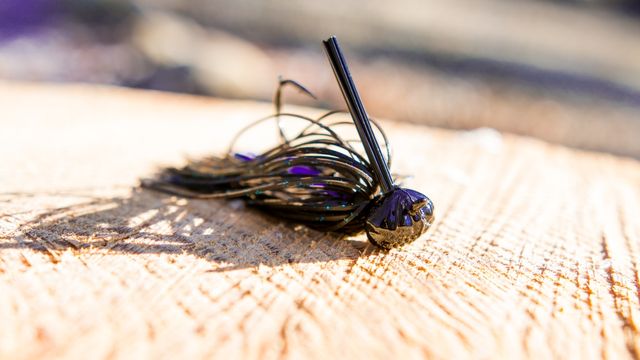
The Clear Water Tactic You Might Not Have Tried...
Visibility is at least 6 feet deep and no fish are in sight anywhere in the shallows.Anglers who like to pitch and flip might be tempted to change their clear water tactic when they encounter this situation. While murky water provides the ideal situation for flipping and pitching, bass can still be caught on these short-range techniques in even gin clear water if you make a few adjustments.Pitching and flipping experts know adapting to the water color is the key to flipping and pitching in clear water. The biggest difference between pitching in dirty water versus clear water is the mood of the fish. When bass are shallow in clear, high-water conditions they are usually in the thin water to spawn or feed. If bass are in a feeding mode in clear shallow water they are going to be twice as aggressive as bass in shallow colored water.A precise presentation requiring a particular lure size and color is a necessity when pitching to clear-water bass. Down-sizing baits and line and keeping a safe distance from the target are keys to catching bass in this pitching situation.If bass have enough shelter in the clear water, the fish will move up as shallow as their dirty-water cousins. The thickness of the cover dictates how shallow bass hold in clear water. If you find some thick cover that creates lots of shade bass will stay as shallow as 6 to 8 inches. Large rocks in the shaded areas of bluffs and ledges are also ideal cover to flip for bass in clear water.
The increased visibility in clear water might discourage you from flipping an area because you can’t see any bass. However in clear water bass blend in with the surrounding greenery while holding tight to flooded bushes and waiting for bait to enter their lair. I recall times when I have seen a jig flipped into a bush and watched it sink to the bottom and then all of a sudden it would disappear even though I never saw a bass in that bush. All I saw was a flash as the fish sucked in the jig.Being able to see bass in the cover is preferable if you are flipping vast stretches of thick bushes in clear water. Then you can pinpoint targets easier than trying to flip all of the cover in the area.Flipping to sighted bass requires more stealth. Aggressive bass will still hit your offering in clear shallow water, but once a bass has been spooked you usually don’t get it to bite.
The best lures for flipping to clear-water bass are 1/4- or 5/16-ounce finesse jigs with some type of small plastic trailer. Another small profile bait for pitching in clear water is a small jig with its skirt removed and replaced by a twin-tail plastic grub or a tube bait. The most productive colors for the jig and trailer are green pumpkin, black-and-blue, root beer and watermelon.Fluorocarbon allows you to fish with heavier line in clear water because of its low visibility. You can use 15- to 20-pound test fluorocarbon to flip to thick bushes and other types of heavy cover. Whenever I am pitching to boat docks or rocks in clear water, I prefer 12-pound fluorocarbon because it is easier to pitch the lure farther and more accurately with the lighter line. The abrasion resistance of fluorocarbon allows me to use lighter line for pitching to these targets without worrying about a fish breaking my line when it makes a run under the dock or into the rocks.When flipping with heavy line in the 20-pound class, you can use a standard 7 1/2-flipping stick. I opt for a 7-foot medium-heavy action baitcast rod with a soft tip when pitching with 12-pound test because the lighter action and softer tip of the rod prevents me from breaking my line when setting the hook at short distances.
A flipping presentation is most effective when presenting lures to thick cover. When targeting sparse or isolated cover in clear, shallow water, stay one to two boat lengths from the cover and pitch your lure to the target. Despite remaining at least 15 to 20 feet from the target, you still need to deliver your lure quietly without a splash on entry into the water if the weather is calm. A noisy entry will triggers strikes sometimes on windy days when bass are reacting more to sound than sight.A quick retrieve to trigger a reaction strike usually works best for clear-water flipping because a bass has less time to look at the lure passing through the fish’s hideout. If your lure fails to generate a strike on the initial fall, quickly reel it in and pitch to another target.
Updated June 30th, 2017 at 10:52 AM CT
